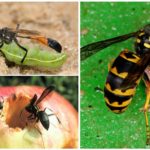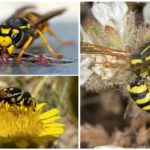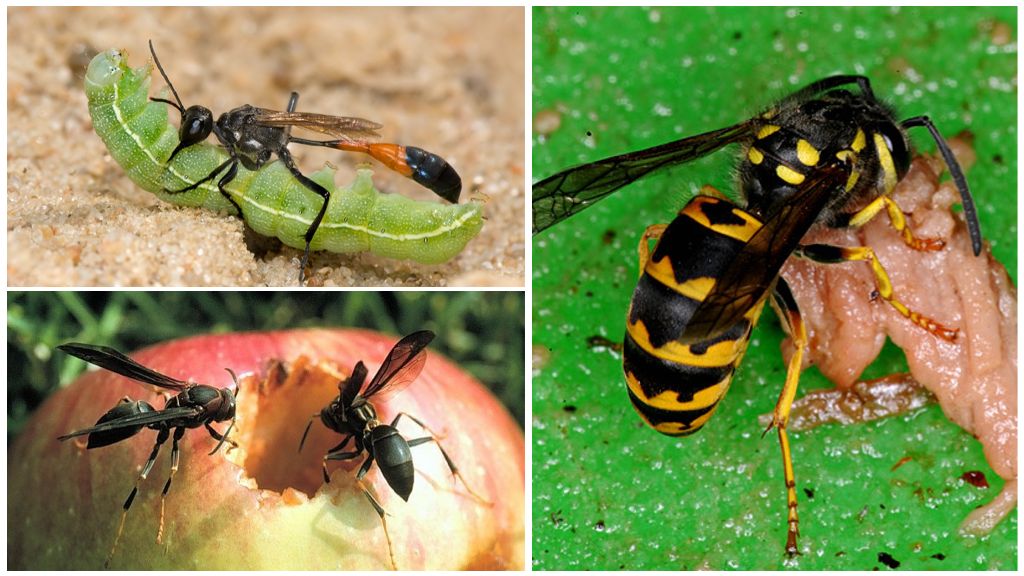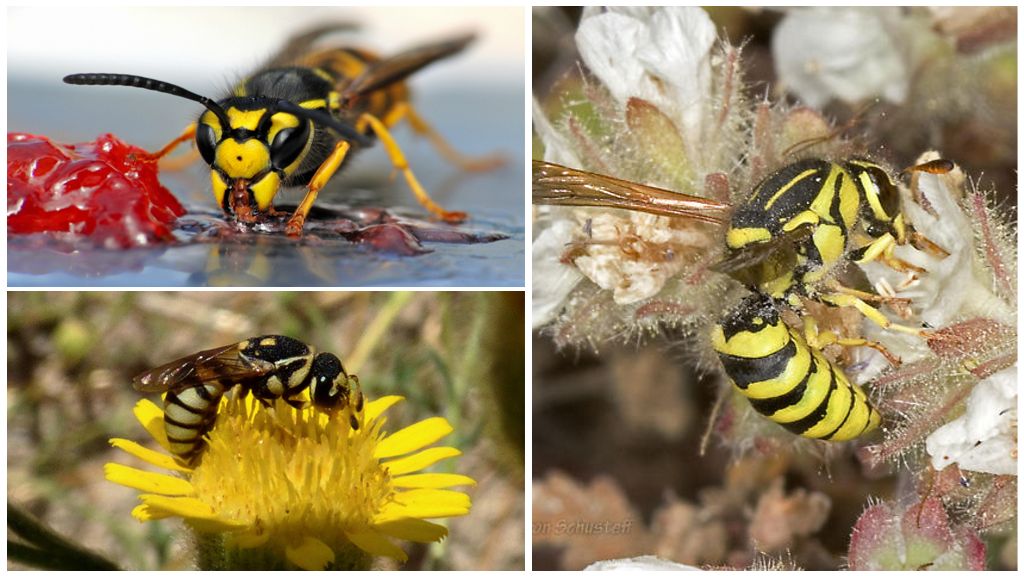What wasps eat
- Power single wasps
- Vegetarian Wasp Nutrition
What feeds the wasps on depends on the stage of development, the species. Conditionally divided into 3 independent families - public or paper, floral, solitary. There are 4,800 species in the world, 6 subfamilies, 260 genera. In Russia lives 150 os species.
Catering public wasps
The taste preferences of the imago, the larvae are different. Extraction of food engaged in working individuals. Provide nutrition womb, young offspring, make stocks for a rainy day. The wasps feed on summer flower nectar, honey of bees, juices of fruits, vegetables, berries.They love sweets, as well as rotten foods.
Imago can be found in the vineyard, on raspberries, strawberries, apples, pears, plums, apricots, melons, watermelons. Attracts insects kvass, lemonade, fruit, vegetable juice, jam, syrup. Often, predators attack bee colonies, destroying the hive in literally 2 hours. They eat honey, bees are taken to feed the larvae.
The statement that wasps eat meat is not entirely correct. Common wasp feeds on juices and sweets. Protein food is necessary for the larvae. They hunt beetles, flies, butterflies, grasshoppers, caterpillars, spiders. Often, predators can be found on meat, fish. Bite prey, carried away to the nest.
Interesting!
The wasps chew on meat, roll small balls, give the larvae, they emit saliva, which serves as food for the imago. There is an interchange of food. Adult wasps can feed on meat, but only after they are eaten by the young.
Power single wasps
Imago eat nectar, fruit, vegetable juices, honey. To feed the younger generation requires protein food. Unlike public wasps, single do not build multi-tiered nestsfeed the offspring alone in a special way.
The female attacks beetles, spiders, bees, larvae of large insects. Paralyzes the victim, but does not kill. He drags an egg into a previously prepared hole in the ground, on a tree. After a few hours, the larva appears, which begins to eat the prey alive for 2 weeks.
Interesting!
Wasp venom immobilizes the victim, but leaves it alive. In this way, the insect provides its cubs with food for the entire development time. The larva eats away the organs gradually, starting with the least important. Only at the end of the parasite’s development does the victim die.
What wasps eat depends on the species.
- Wasp a philanthropist, the second name is the bee wolf, eats honey, feeds the larvae on bees. For them, nectar, sweet food acts like poison. Having caught the bee, the philanthropist squeezes out, eats honey, then feeds the carcass to the younger generation.
- A large earthen wasp, Scolia, hunts rhinoceros larvae and Khrushchev. The insect digs into the ground, finds the victim, paralyzes it with poison, drags it into a previously prepared mink. Lay the egg. A separate burrow is created for each larva.
- Pompilidae or road wasps choose different spiders as food for their larvae.Some of them prey on poisonous tarantulas. Nests are built in the soil or inside branches, shoots, old hollows. The body of the spider is enough to feed one growing individual.
On a note!
The specificity of nutrition of single species makes them useful for humans. Imago eat nectar, helping to pollinate plants. The larvae are fed by insects, most of which are agricultural pests.
Vegetarian Wasp Nutrition
Adults, growing offspring eat exclusively flower nectar. The official name of the Mazar (Masarinae). They belong to the family of single wasps. Externally similar to the public relatives with yellow-black stripes on the body. Size not more than 10 mm. Nutrition adults - nectar, pollen, transfer reserves in the goiter. Benefit by pollinating various plants.
Nests are built in the soil or on the branches of trees, in old hollows. A separate cell is created for each egg. Filled with floral nectar, sealed. In this way, the female provides the younger generation with food for the entire development cycle.
Feeding the hornets
Large representatives of the wasp family are endowed with powerful jaws, a strong sting.The food is similar to paper wasps, but due to its large size. hornets able to hunt larger insects, even animals. Imago eat juices of fruits, vegetables, flower nectar, as well as honey. They often attack beehives, eat honey stocks, carry away the dead bodies of the bees.
On a note!
To feed the younger generation, the hornets prey on smaller wasps, locusts, grasshoppers, spiders, amphibians, rodents. Even birds can suffer from predator attacks. Hornets are extremely aggressive, grouped. If one member of the family finds a power source, in an instant there will be a whole swarm.
The wasps themselves become victims of birds, spiders-bokhodov, hedgehogs, bears, skunks, toads, rats, mice. Bears, hedgehogs ruin wasp families, without fear of being bitten. Sting does not reach the skin, thanks to the spines, thick coat of wool. A shrike pins wasps on wooden spines, then eats. Flycatchers, blackbirds catch striped insects on the fly, tearing off the belly with a sting.









